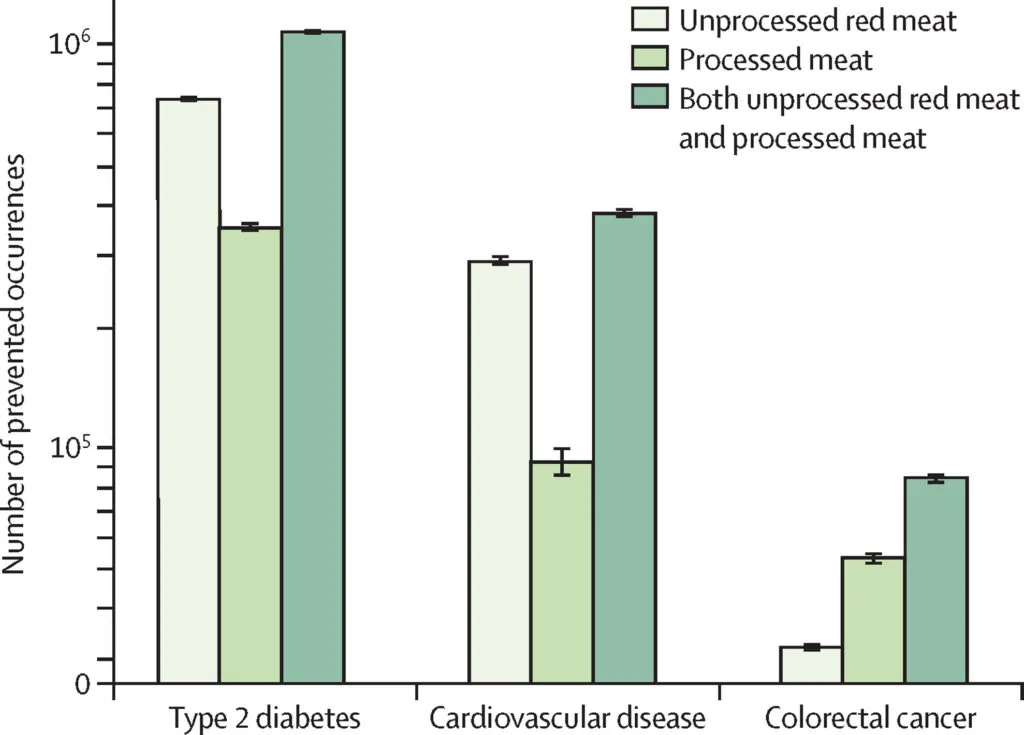Meat in Moderation
If 200 million adults chose to cut their red and processed meat intake by 30%, over one million cases of type 2 diabetes could be prevented.

Read Time: 2 minutes
Published:
You could probably stand to eat less meat. Scientists certainly think so.
Overconsumption of processed meats (ham, bacon, salami, hotdogs, etc.) and red meats (beef, pork, lamb) may put us at risk of stomach, colon, prostate, and pancreatic cancers. The high amounts of saturated fat and cholesterol in these meats also contribute to heart disease, high blood pressure, and type 2 diabetes.
The International Agency on Cancer Research, the World Health Organization, and the National Institutes of Health recommend we try to eat as little of these products as possible. But small adjustments, like reducing our intake and occasionally opting for alternatives, can help us live healthier lives.
Joe Kennedy and colleagues simulated the effects of eating less processed and red meat. They obtained data on a sample of adults from the National Health and Nutrition Examination Survey (NHANES). The researchers estimated each participant’s risk for chronic illnesses based on how much meat they reported eating per day. They then calculated individuals’ hypothetical risk for these diseases if they reduced their long-term meat consumption by 5%-100%.

The graph shows the effects of cutting daily meat intake by 30% (for example, going from eating 30 grams of meat per day to about 20 grams). The y-axis shows the number of prevented occurrences of chronic illness on an exponential scale (105 = 10,000, 106 = 1,000,000). If a population of 200 million adults chose to cut their red and processed meat intake by 30%, over one million cases of type 2 diabetes could be prevented, as well as tens of thousands of cases of cardiovascular disease and colorectal cancer. Reducing intake of both types of meat (shown in dark green) had a stronger preventative effect than limiting just one.
As the saying goes, everything in moderation, especially the unhealthy foods we love. The authors recommend that the Department of Health and Human Services add stricter guidelines for meat consumption in their dietary guidelines. Currently, guidelines for processed meat only exist for children under 23 months old, but the authors recommend they should be extended to all age groups. These extended guidelines can set standards in schools and help adults make informed food choices.



